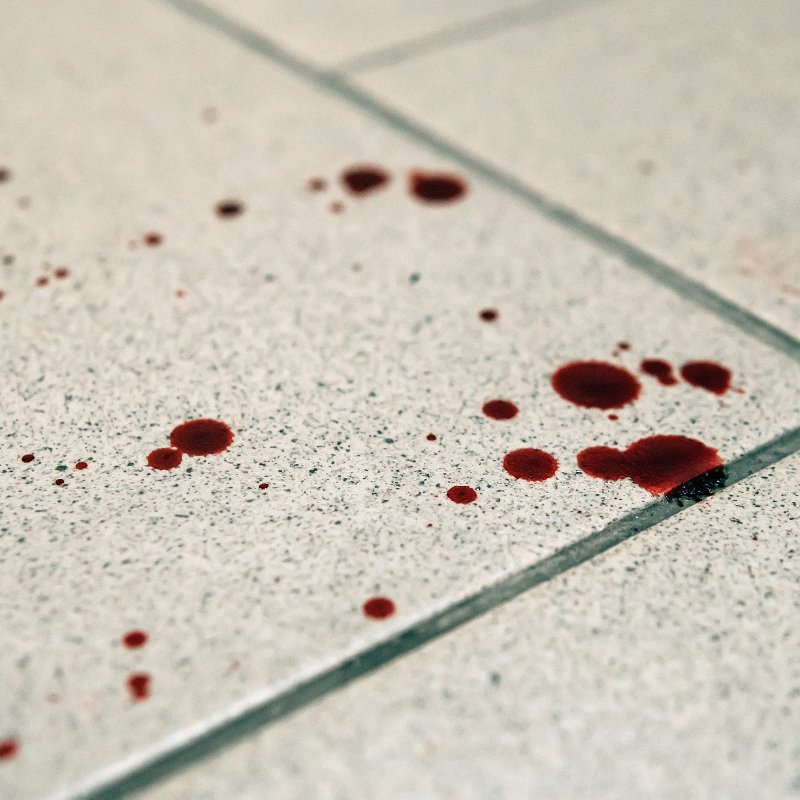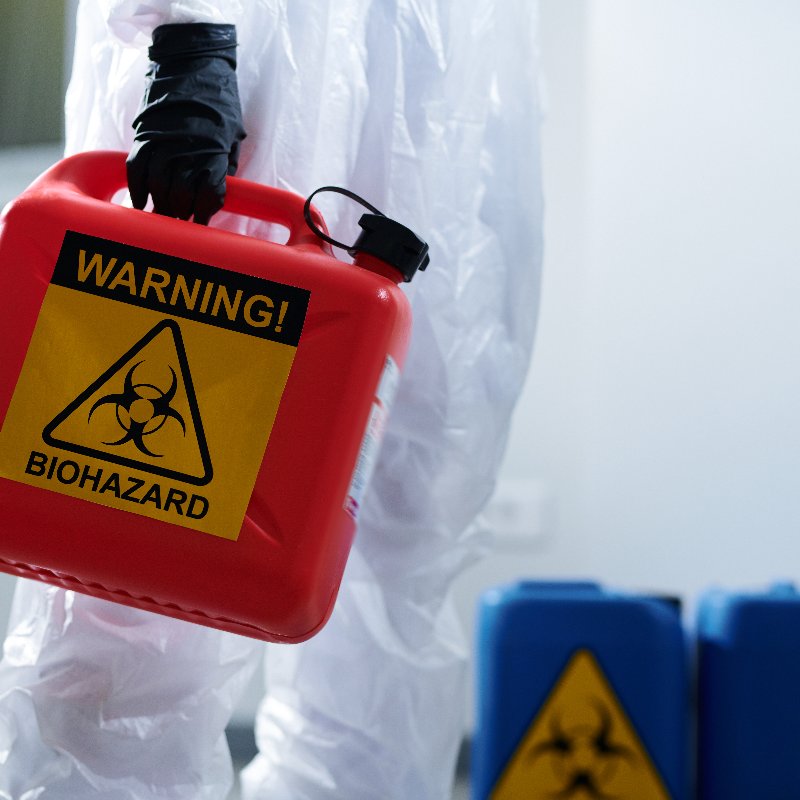
Cleaning Up Blood
After two years of COVID and all the other disease we’re subjected to these days, the words ‘biohazard cleanup’ has become used more than ever. What is biohazard cleanup? Biohazard cleanup procedures include the process of cleaning, deodorizing, and sanitizing an area or site where a chemical spill or violent crime, or traumatic accident that has resulted in death or injury has taken place.
Examples of when and where biohazard cleanup is required include:
- Crime scenes
- Homicide scenes
- Biohazard cleanup after death at the death scene
- Suicide scenes
- Hoarding scenes
- Animal remains
- Animal or human waste
- Blood and bodily fluid accidents or spills
- Chemical hazards
- Possible coronavirus contamination
Why do I have to clean up bodily fluids?
Body fluids like blood, feces, urine, vomit, or other major bodily fluids are all considered to be potentially contaminated with bloodborne bacteria or other germs, i.e., biohazard. Cleanup is required immediately to minimize the possibility of any bacteria or germs spreading and contaminating others or other surfaces. Any of these substances can be potentially infectious making it necessary for a biohazard cleanup process.
What are the major bodily fluids besides blood?
There are several forms of bodily fluids, and typically not something that comes up in general conversations. Bodily fluids should be considered the same as automotive fluids. Bodily fluids are needed for or from our body’s functions as antifreeze, gas, and oil are some of the fluids a vehicle needs to function. The major body fluids that can create the need for a biohazard clean-up are:
- Blood: A major fluid that is part of the human body’s defense by carrying waste away that is within our body like feces, sweat, and urine. Blood also provides our body oxygen and other substances essential to our body’s survival like hormones and sugar.
- Saliva. Contains mostly water, saliva also contains minerals and proteins that prevent gum disease and tooth decay. This bodily fluid helps us chew and swallow.
- Semen. Found in males and contains catecholamines, fructose, and protein that is released from the body through the penis during sexual acts.
- Vaginal fluids. Found in women within the vagina area and contains amino acids, carbohydrates, proteins, and other acids that are produced by common lactobacillus bacteria.
- Mucus. Comes from the lungs, mouth, nose, sinuses, and throat, containing antibodies, enzymes, and proteins that keep these areas of the body moist and fight bacteria and viruses.
- Urine. Contains mostly water and flushes the human body of chemicals and dead blood cells that the body doesn’t need.
What cleans up blood and bodily fluids?
Bodily fluids like diarrhea and vomiting present a high risk of spreading contamination. Oftentimes, when a person with diarrhea or gastroenteritis vomits in an explosive or projectile manner, the substance can thrust small airborne virus particles to 25-feet. Gastroenteritis viruses can survive up to 60 days on hard surfaces such as carpeting, door handles, faucets, handrails, telephones, toilets, touch screens, upholstery, and kitchen prep areas.
It is the recommendation of the CDC and OSHA to use chlorine as a disinfectant with paper towels that are disposed of when soiled and use fresh paper towels to continue. This has proven to be effective against pathogens and other viruses that are known to cause gastroenteritis. A chlorine bleach solution can create by mixing regular, unscented household bleach with a chlorine sanitizer.
What equipment is needed to clean bodily fluids?
Before the process of biohazard cleanup and disinfecting bodily fluids spills, proper safety equipment is recommended that includes:
- Gloves: disposable and waterproof
- Rubber boots
- Safety goggles, if no potential splashing is possible, disposable is acceptable
- Coveralls or biohazard cleanup suit, disposable
- Cloth towels that are disposable
- Broad spectrum disinfectant that kills bacteria, germs, and viruses
- Biohazard cleanup bags with approved labels & manifest
What disinfectant should be used to clean up blood?
The proper biohazard cleanup process for blood starts with wiping up the blood with paper towels and placing them in plastic garbage bags. Then gently pour a bleach solution on the contaminated surface and allow it to sit for twenty minutes. Finish wiping up with more paper towels then place them in a plastic garbage bag for disposal.

Closing Comments
A few Biohazard cleanup tips and advice is to realize that a biohazard cleanup can be in any residential and industrial structure and are not always as dramatic as a chemical spill or other accidents. Biohazard cleanup can be required after a simple roof leak that results in black mold growth or rodent infestation and rodent feces.
Biohazard cleanup procedures should be followed by hotels, motels, and other premises where bodily fluids may exist or sharps waste like hypodermic needles are used. Viral outbreaks are possible in assisted living facilities and professional cleaning is required with hazmat cleanup procedures.
Anytime there is questionable materials to be cleaned, hazmat cleanup procedures are recommended. This includes using disposable gloves, masks, and materials that are placed in a sealed plastic garbage bag and promptly disposed of.

